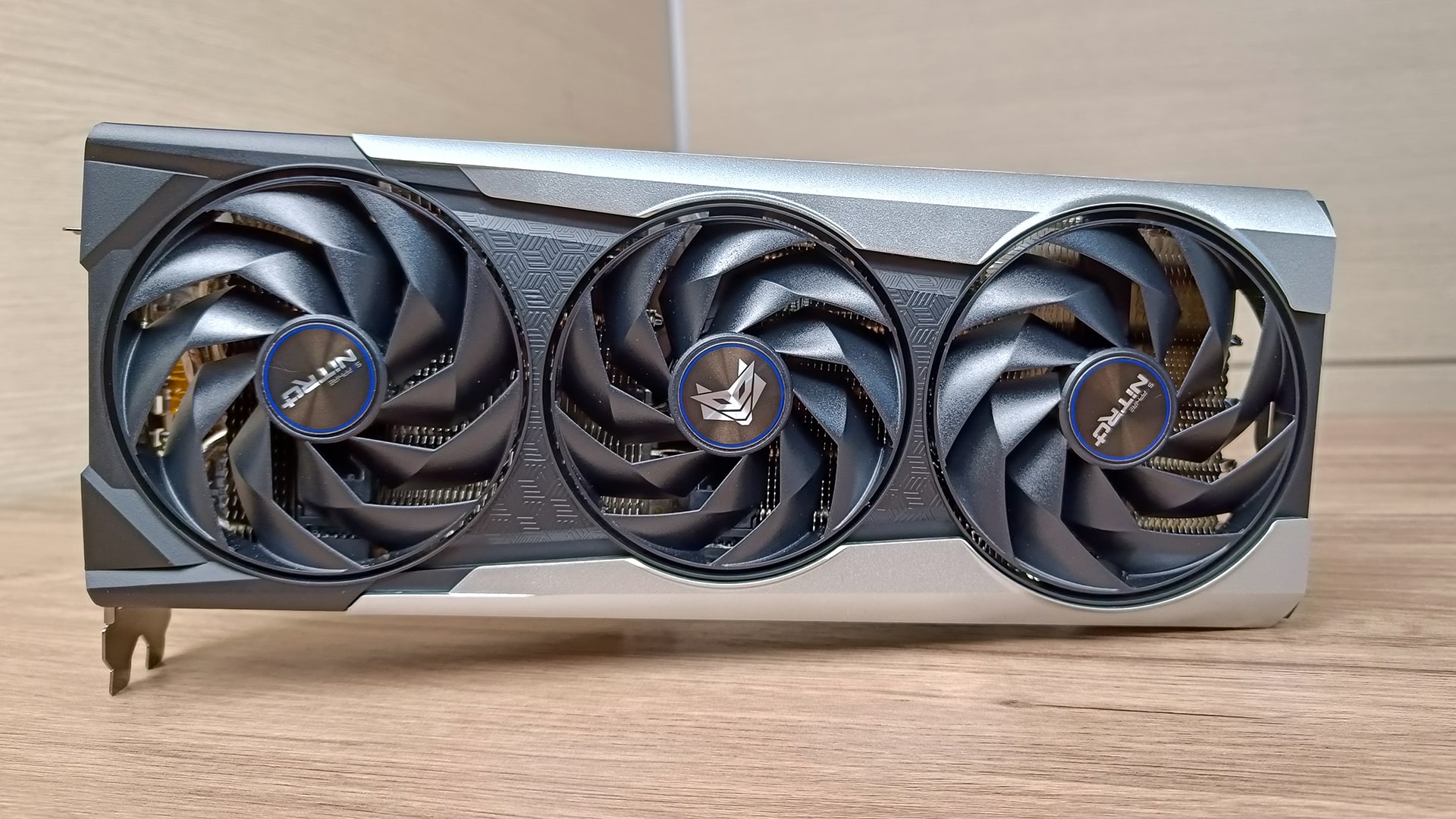Sapphire NITRO + RX 6750 XT: how much better performance compared to the 6700 XT?
A few weeks after the arrival of the first new generation video cards from NVIDIA and AMD, trying a GPU on the market for several months may seem inappropriate, almost a waste of time, but being a model we had not yet got our hands on, we have decided to take a look at it, so as to directly ascertain the evidence deducible from the technical specifications or from the simple reading of the reviews of colleagues.
In this article we deal with the Radeon RX 6750 XTespecially the model NITRO + by Sapphire. It was around mid-May when AMD decided to refresh the Radeon RX 6000 GPU offering, driven by architecture RDNA 2with a trio of models featuring the number 50 in the product name: RX 6950 XT, RX 6750 XT and RX 6650 XT.
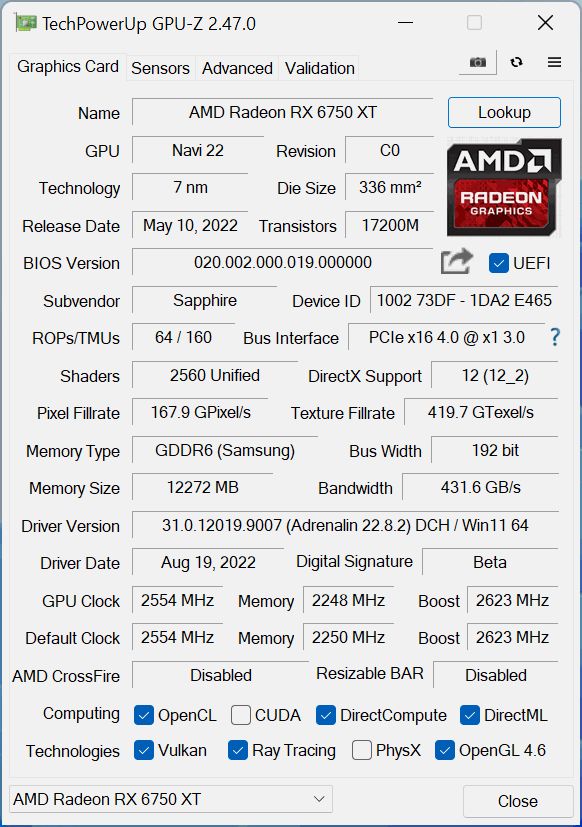
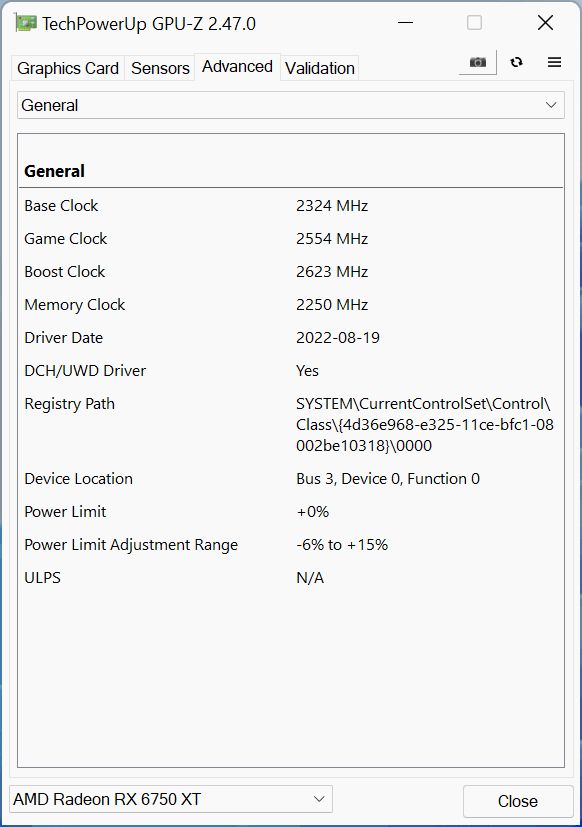
Higher clock rates for the GPU but above all faster memory (switching from 16 to 18 Gbps) are the main news. Designed to complement the RX 6700 XT on the market and not replace it, the reference specifications of this 6750 XT provide a Game Clock of 2495 MHz and a Boost Clock of 2600 MHz, respectively an increase of 71 and 19 MHz compared to the 6700 XT. A little bit. Nonetheless, the TBP went up from 230W to 250W. The Navi 22 GPU continues to deliver 2560 stream processor as a result of 40 Compute Unit, 40 Ray Accelerator, integrates 96 MB of Infinity Cache and a 192-bit memory bus connected to 12 GB of GDDR6 memory.

Another difference compared to the reference Radeon RX 6700 XT concerns the heatsink, which has three fans compared to the two of the 6700 XT. Having said that, we come to the characteristics of the Sapphire NITRO + RX 6750 XT, a custom model that comes with a heatsink with three fans (100 mm the external ones and 90 mm the central one)accompanied by a backplate for an overall size greater than 2 slots.

The fans, with double ball bearings, are defined as “hybrid”, ie they are designed both to push more air downwards and, at the same time, along the radiator. Not only that: they turn in the opposite direction, with the central one rotating clockwise and the others anti-clockwise. As far as nutrition is concerned, they are present two 8-pin PCI Express connectors which allow the card to work together with the 75W coming from the PCIe slot (it is a PCIe 4.0 solution, but it can also work in the PCIe 3.0 and 5.0 slots).
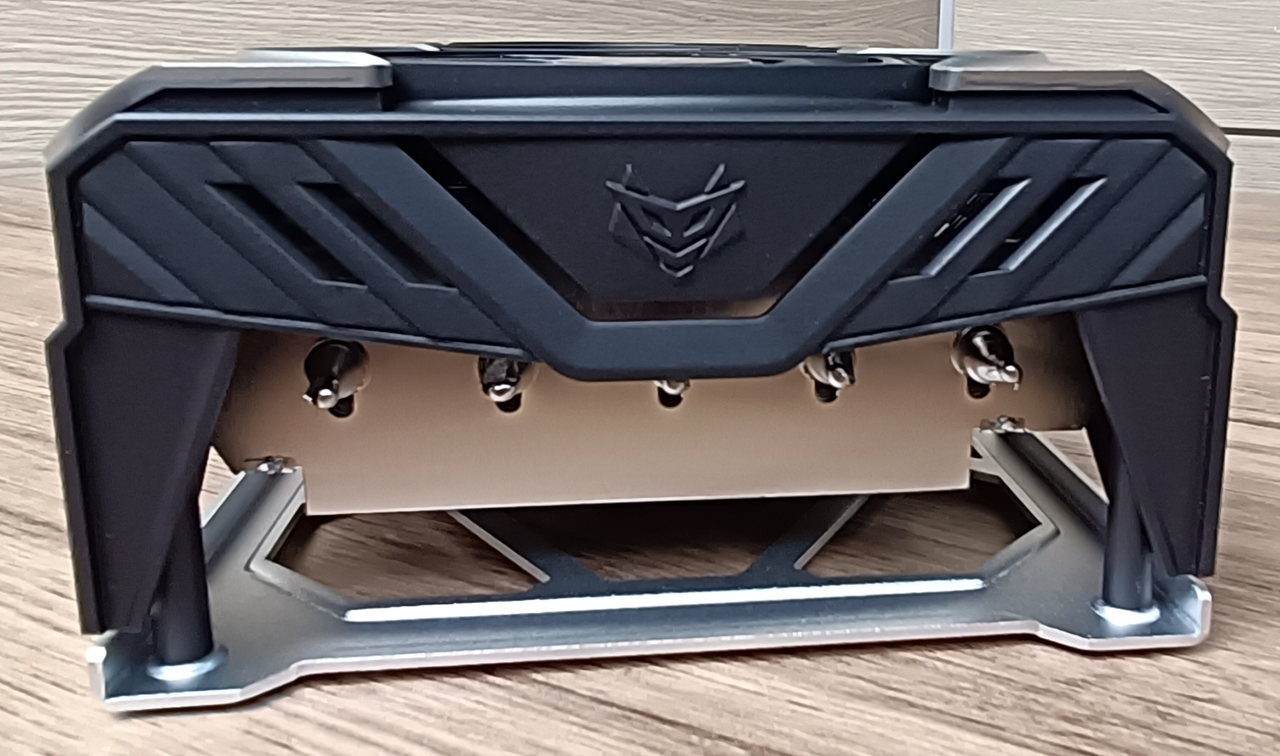
In the back we find three DisplayPort 1.4 and one HDMI 2.1. The heatsink closely resembles, indeed probably is the same, aboard the NITRO + RX 6800 XT. Sapphire’s card has a length of about 31 cm and weighs roughly 1.5 kilograms.
Being a custom solution, this model is accompanied by a Game Clock of 2554 MHz and a Boost Clock of 2623 MHz, resulting in a TBP of 273W. Like other Sapphire NITRO + seen in the past, there is no missing dual BIOS selectable with a switch on the board or via the TriXX software.
Il BIOS Silent brings the frequencies to reference levels, while that Performance pushes them to the maximum set by Sapphire. Since the card proved to be super quiet even with the Performance BIOS, there is no great need to switch to secondary firmware, not forgetting that much of the time – i.e. without graphics load – the card is totally silent because the fans remain stationary.
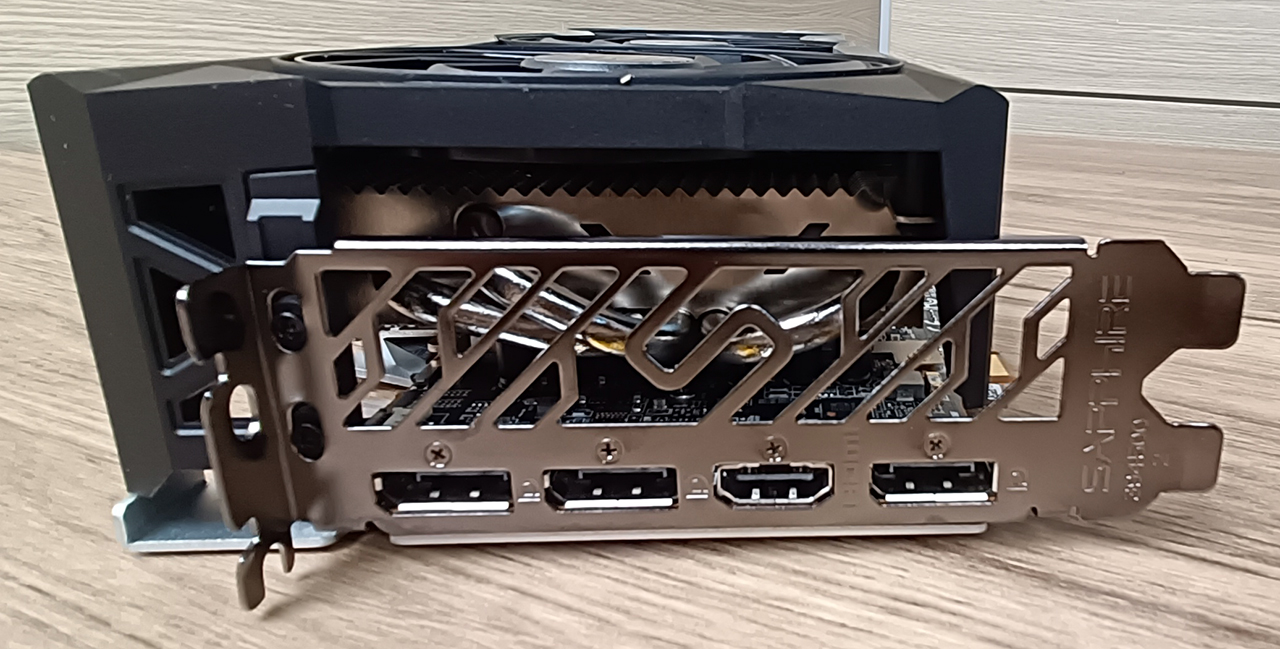
In addition to the side RGB LEDs and the rear logo that lights up, another peculiarity is the presence of an ARGB towards connector on the end of the board to synchronize the lighting with that of your motherboard.
Test setup
Tests were conducted at resolutions of 1920×1080 pixels, 2560×1440 pixels and 3840×2160 pixels. Since the focus was on seeing the difference in performance with the RX 6700 XT, we limited the test suite to rasterization only, without setting up ray tracing or activating upscaling technologies. In addition to the 6700 XT, we have added other cards from AMD and NVIDIA to the test as a kit to see the performance below in an overall perspective. The tests were performed in the case of AMD GPUs with the 22.8.2 drivers, while for the NVIDIA solutions we used the 516.94, both the most recent at the time of the benchmarls. Below is the configuration of the system used for the tests (it is the last time we will use it, we will move on to a platform of the latest generation coming soon):
- Operating system: Italian Windows 10 Pro
- Processore: Intel Core i9-10900K
- Alimentatore: CoolerMaster Silent Pro Gold 1200 Watt
- Motherboard: ASUS ROG Maximus 12 Hero WiFi
- Memoria: G.Skill Trident-Z 2 x 8 GB DDR4-4000 (17-17-17-37)
- SSD: Crucial P1 M.2 2280 1TB
Performance
The comparison between the Radeon RX 6700 XT in the AMD reference version and Sapphire’s Radeon RX 6750 XT, moreover overclocked, does not see a big difference in terms of performance, so if looking at the technical specifications you immediately realized that the faster memory, and the few megahertz wouldn’t have made much of a difference … well, you got it right.
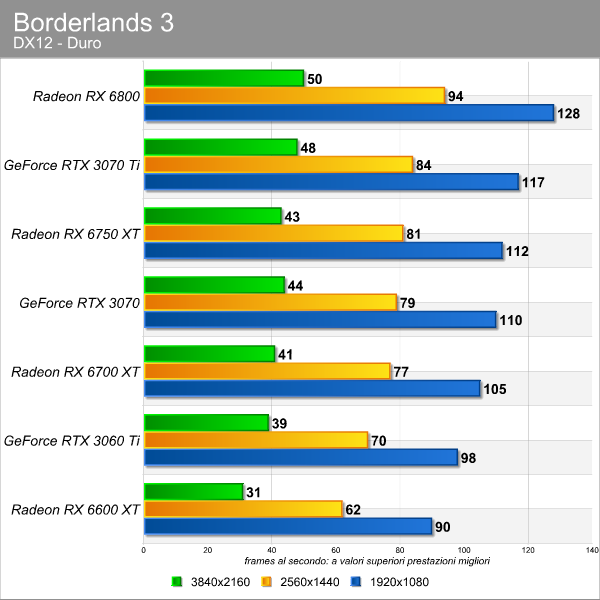
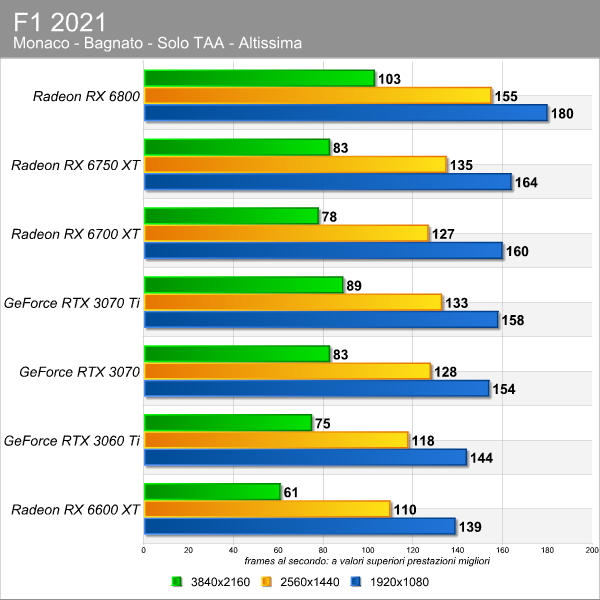
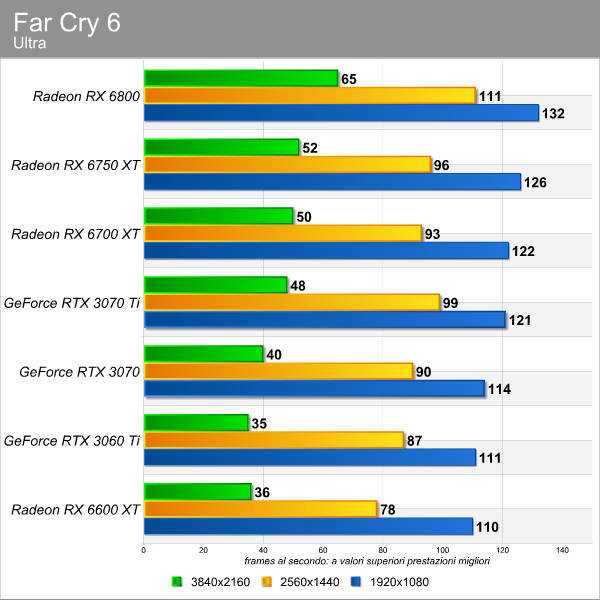
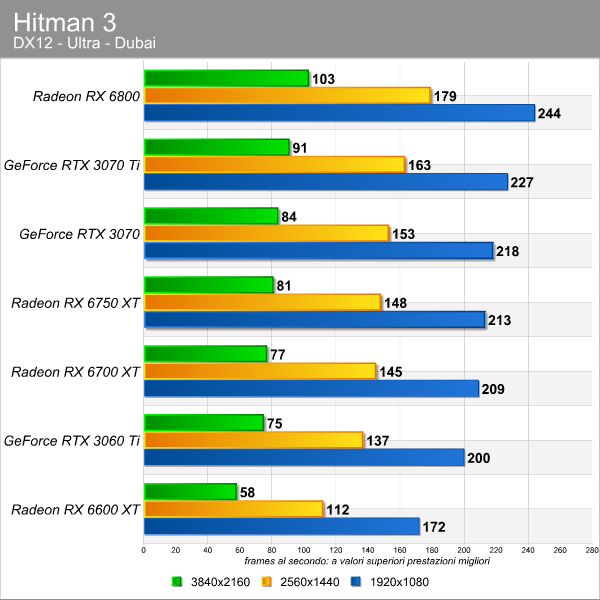
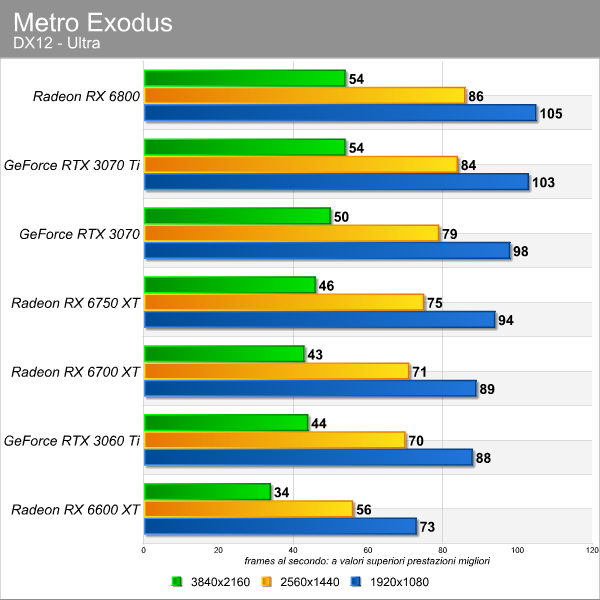
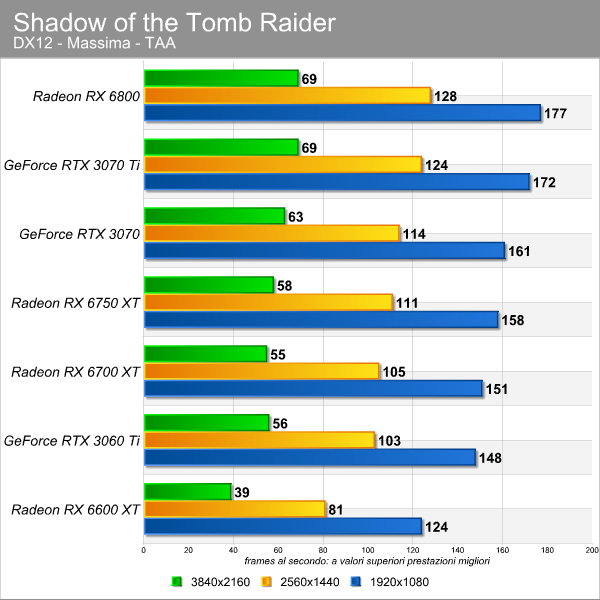
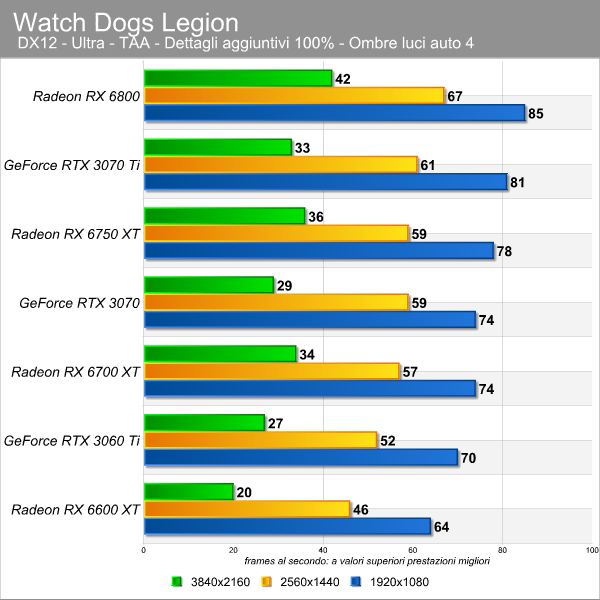
What can be said further in terms of performance is that the Radeon RX 6750 XT allows AMD to overtake the RTX 3070, at least in this limited suite of games. Testing other games the situation may be different, but without a doubt the 6700 XT, RTX 3070 and 6750 XT are very close, speaking of performance without ray tracing. In this sense NVIDIA, we have known for some time, has an advantage in the generational comparison; we’ll see what happens with the next generation.
Consumption, temperature and frequencies
In this chapter we necessarily focus on Sapphire’s implementation, in the NITRO + model, so don’t take it as a generalization of the behavior of the other RX 6750 XTs on the market. Let’s start with consumption, which frankly “impressed” us, because they exceed those of the more powerful RX 6800. We repeated the test several times, always recording the same result:
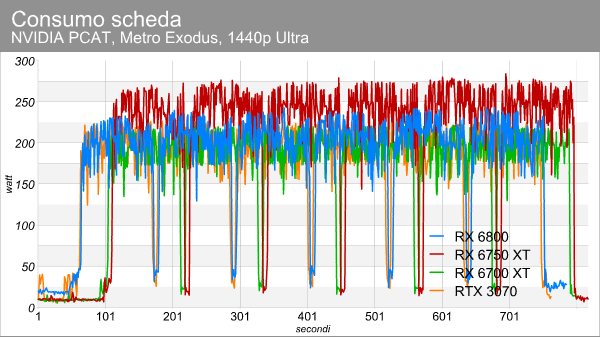
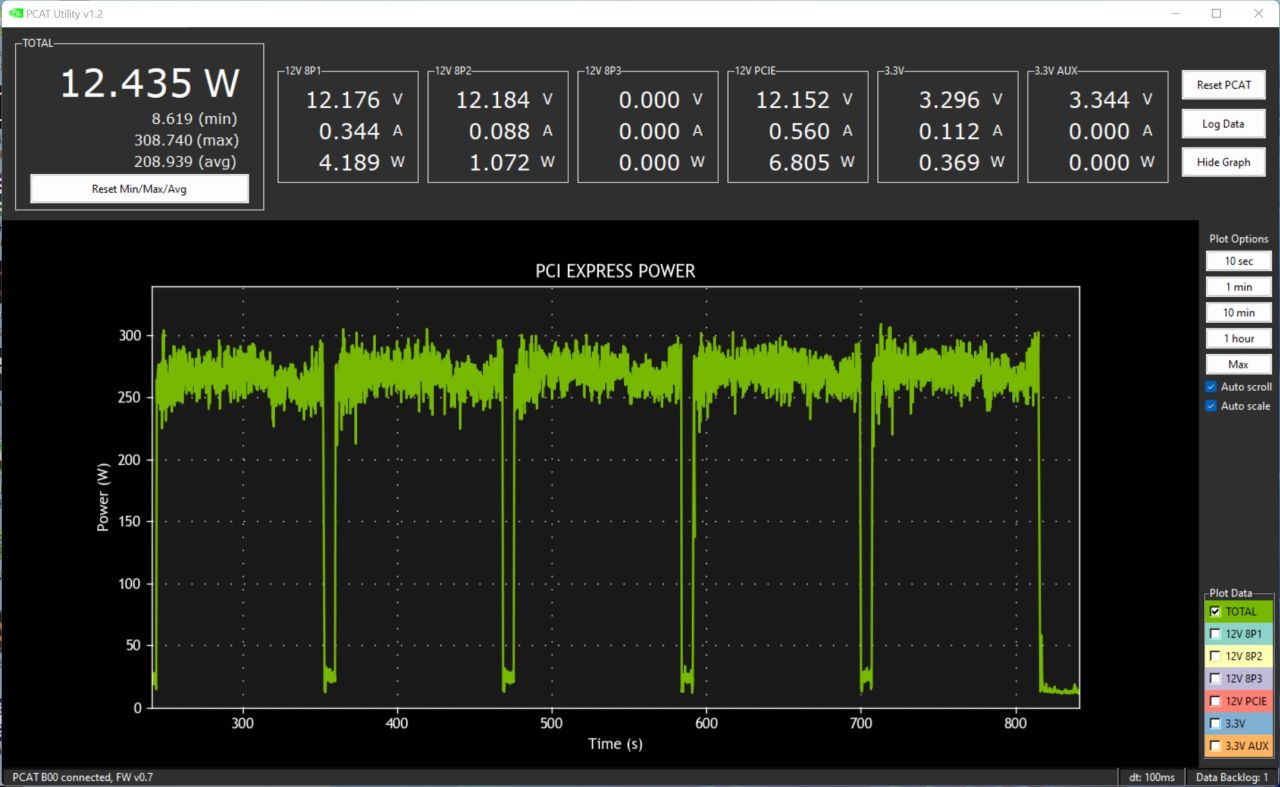
What is the reason for this difference? The GPU does not seem to be responsible, despite much higher operating frequencies (around 2700 MHz in our load, compared to 2200 MHz on the 6800), but everything else must be charged: memory and other components on the PCB. From the point of view of temperatures, the NITRO + behaves very well, and does it in a silent way: in an environment with a noise level of about 36 dB, the board under load produced (value measured at a distance of 10 cm with sound level meter placed perpendicularly) up to 44 dB under load with Metro Exodus, but for some time remaining around 41 dB.
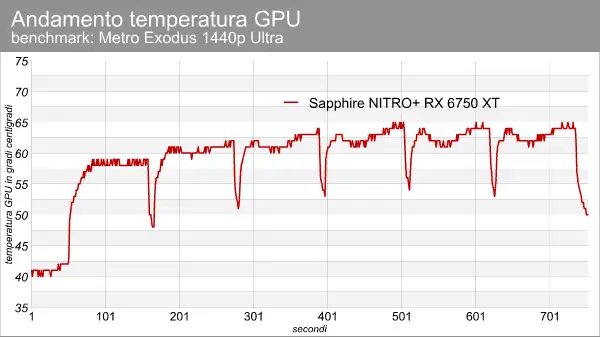
Below is the graph on the GPU clock which is confirmed close to 2700 MHz during load sessions.
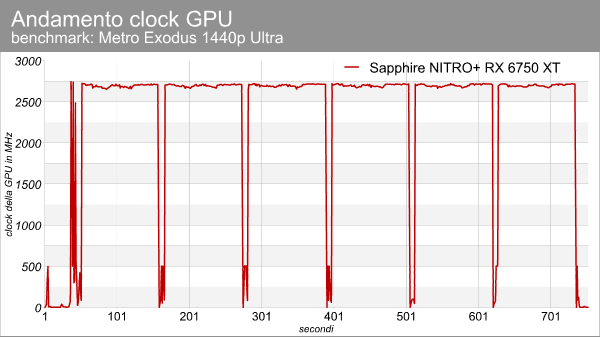
Conclusions
The Radeon RX 6750 XT is a video card that adds little to the market, a refresh that even as such, disappoints. Not even the other “50” models impressed us. Talking about it today, with the new generation of NVIDIA coming out and a few months from AMD’s RDNA 3 architecture, certainly does not help to increase its value.
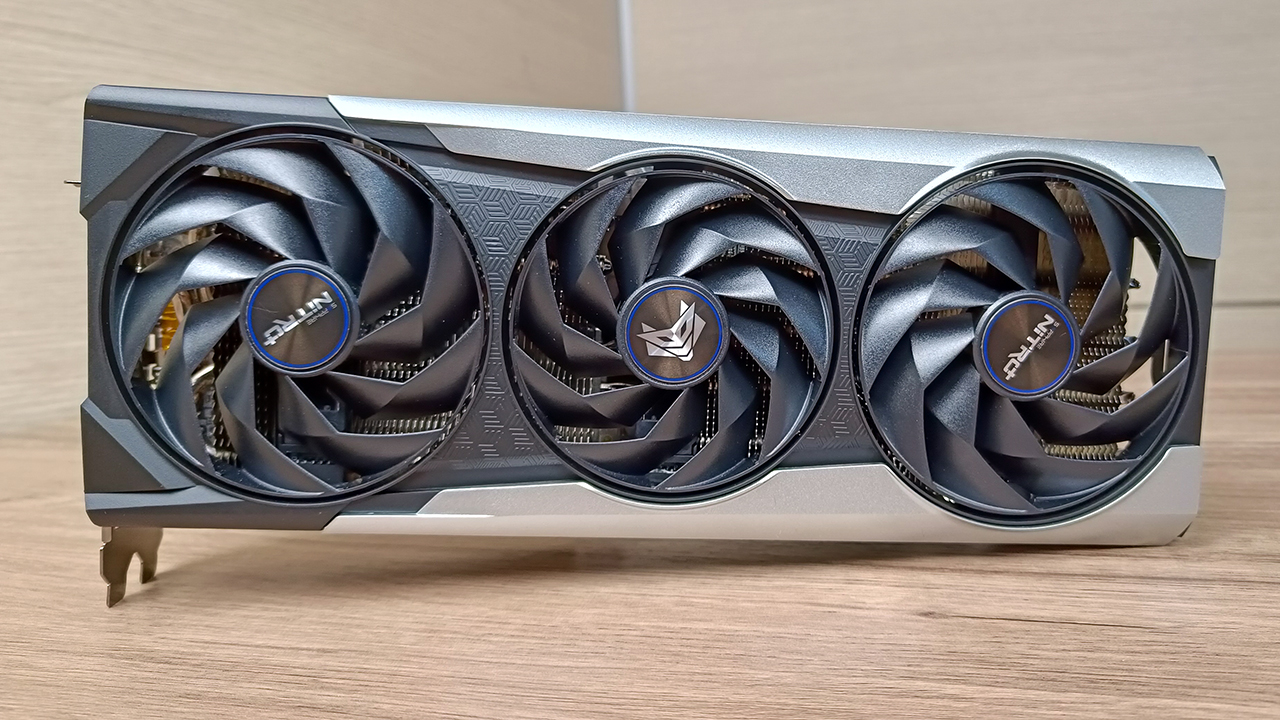
GPU prices have certainly improved compared to the past and so has availability, but sifting through the web the NITRO + 6750 XT is still far too expensive. It also doesn’t help to learn that the card consumes more than the custom 6700 XTs on the market and the RTX 3070.

However fast to play in WQHD and strong in a technological sector that supports ray tracing but can above all count on the expansion of the FSR upscaling technology (1.0 and 2.0), the Sapphire RX 6750 XT is a card that is difficult to recommend in the light of what is listed.




